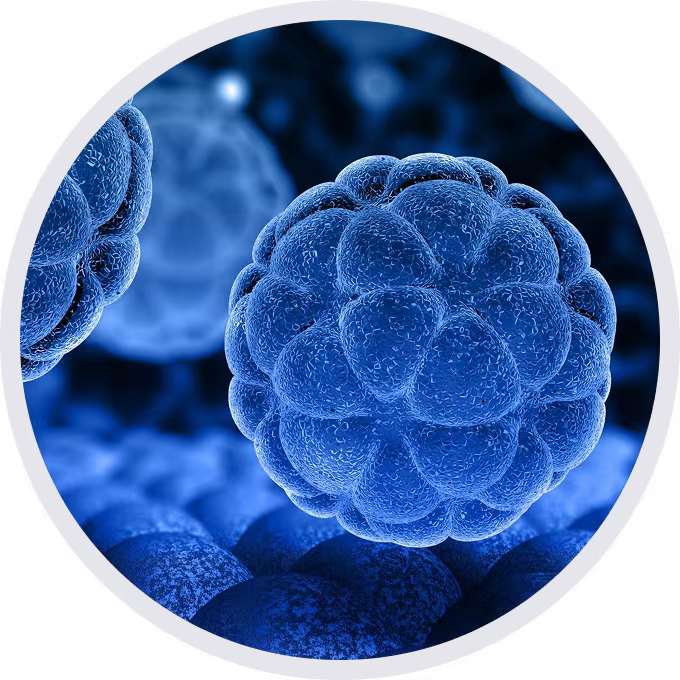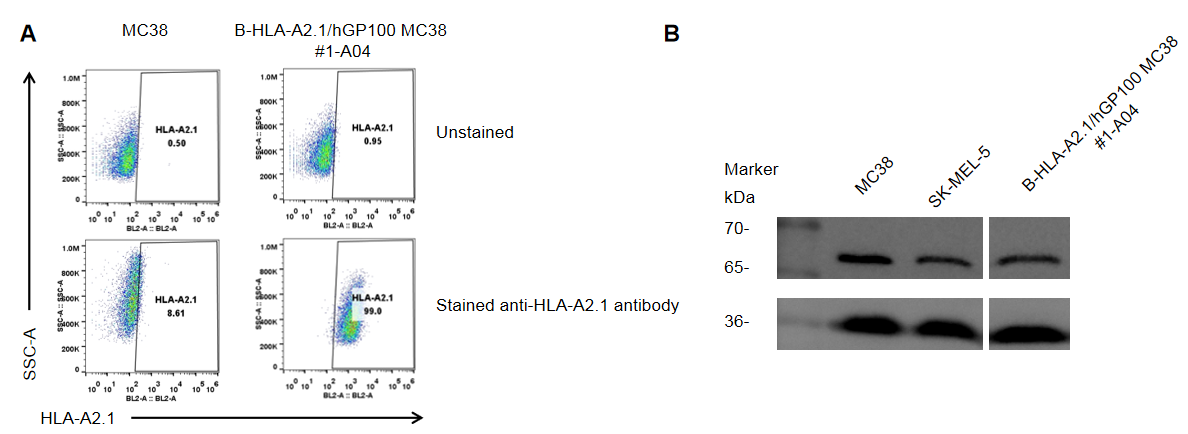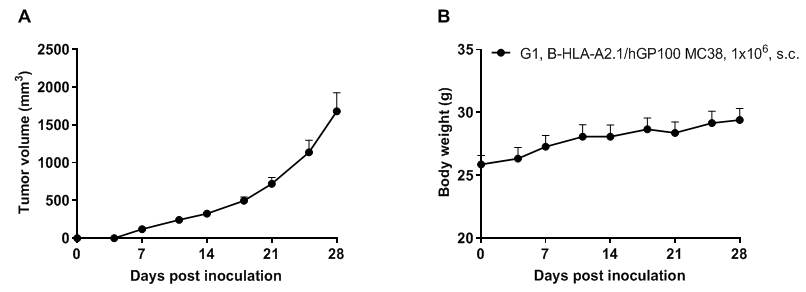


• 322400
| Product name | B-HLA-A2.1/hGP100 MC38 |
|---|---|
| Catalog number | 322400 |
| Strain background | C57BL/6N |
| Aliases | IMD43, AMYLD6, MHC1D4; HLAA; PMEL, ME20, P100, SILV, HMB45, ME20M |
| Tissue | Colon |
| Disease | Colon carcinoma |
| Species | Mouse |

HLA-A2.1 and GP100 expression analysis in B-HLA-A2.1/hGP100 MC38 cells by flow cytometry, respectively. Single cell suspensions from wild-type MC38 and B-HLA-A2.1/hHER2 MC38 #5-G05 cultures were detected with species-specific anti-HLA-A2.1 antibody (Biolegend, 343306) and anti-human GP100 (Thermo Fisher, PA5-95605), respectively. Human HLA-A2.1 was detected on the surface of B-HLA-A2.1/hGP100 MC38 cells but not wild-type MC38 cells(A). Human GP100 was detected in the B-HLA-A2.1/hGP100 MC38 cells and wild-type MC38 cells as the antibody cross recognizes human GP100 and mouse GP100(B).

HLA-A2.1 and GP100 expression evaluated in B-HLA-A2.1/hGP100 MC38 tumor cells by flow cytometry and western blot, respectively. B-HLA-A2.1/hGP100 MC38 cells were subcutaneously transplanted into B-HLA-A2.1 mice (male, 7-week-old, n=6). Upon conclusion of the experiment, tumor cells were harvested and assessed with species-specific anti-HLA-A2.1 antibody (Biolegend, 343306) and anti-human GP100 (Thermo Fisher, PA5-95605), respectively. Human HLA-A2.1 was highly expressed on the surface of tumor cells(A). Human GP100 was detected in the tumor cells(B). Therefore, B-HLA-A2.1/hGP100 MC38 cells can be used for in vivo efficacy studies evaluating cancer vaccines.

Subcutaneous tumor growth of B-HLA-A2.1/hGP100 MC38 cells. B-HLA-A2.1/hGP100 MC38 cells (1×106) were subcutaneously implanted into B-HLA-A2.1 mice (male, 7-week-old, n=6). Tumor volume and body weight were measured twice a week. (A) Average tumor volume. (B) Body weight. Volume was expressed in mm3 using the formula: V=0.5 × long diameter × short diameter2. Results indicate that B-HLA-A2.1/hGP100 MC38 cells were able to establish tumors in vivo and can be used for efficacy studies. Values are expressed as mean ± SEM.